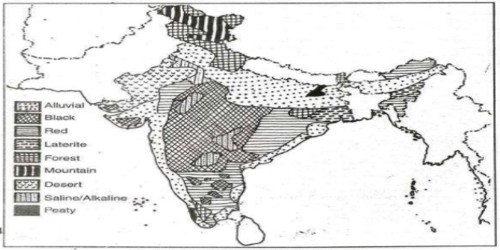Forest Soils in Indian Subcontinent
As the name suggests, forest soils are formed in the forest areas where sufficient rainfall is available. One can find this type of soils Himalayan region, Western and Eastern Ghats and some parts of the peninsular plateau. As the name suggests, forest soils are formed in the forest areas where sufficient rainfall is available. The soils vary in structure and texture depending on the mountain environment where they are formed. They are loamy and silty on valley sides and coarse-grained in the upper slopes. In the snow-bound areas of the Himalayas, they experience denudation, and arc acidic with low humus content. The soils found in the lower valleys are fertile. It is evident from the foregoing discussions that soils, their texture, quality, and nature are vital for the germination and growth of plant and vegetation including crops. Soils are living systems.

Characteristics – This type of soils are rich in organic matter(humus) but are poor in nutrients such as potash, phosphorus, and lime. These soils are somewhat acidic in nature. Crops cultivated in this soils require supplementing the good fertilizers. These soils are rich in organic matter and humus but poor in potash, phosphoric acid, and lime.
Like any other organism, they too develop and decay, get degraded, respond to proper treatment if administered in time. In the regions of heavy rainfall, it contains more humus. Therefore, in these regions, it is suitable for the cultivation of various fruits, wheat, maize, barley etc. The slopes are used for horticulture and plantations crops like tea, coffee, spices, apple, peach etc. Rice and wheat are grown in valleys. Potatoes are grown in mostly all areas. These have serious repercussions on other components of the system of which they themselves are important parts.















